Are you looking for ways on how to paint stainless steel, but are finding that the products you are using don’t adhere to the surface? Read on, as Rawlins Paints take a look at the best stainless steel paints and primers for general users and for application by professionals.
Click here to skip recommended products and to continue reading.
Shop General Use Products
Shop Professional Use Products
For the general user:
Clean and degrease with methylated spirit, lightly abraded and apply 2-3 coats as required of Bradite One Can Matt or Eggshell in the colour/finish of your choice (2,400+ shades available). Light surface rusting can be treated with Flag Rust Converter. Heavy rusting to be removed to clean metallic finish (SIS-St 3).
For professional use:
Kolorbond K2 – apply as per Application instructions for Kolorbond K2
Quick Links – Click To Jump To Section:
In this article on painting over stainless steel, Rawlins Paints will look at the following subjects:
Sealants and Adhesives for use on Stainless Steel
How To Get A Stainless Steel Painted Effect Finish
What is the Best Primer for Stainless Steel?
Treating Rusted Stainless Steel
Direct to Stainless Steel Paints
Heat Resistant Paints for Stainless Steel
What is Stainless Steel?
Stainless steel is a form of steel that contains chromium. It is commonly used for commercial and industrial purposes due to its corrosion resistance toward tarnishing or rusting. The chromium forms a thin layer of oxide on the steel’s surface, known as a passive layer. This chromium ‘passive layer’ protects the steel from common forms of corrosion. Other elements often found in stainless steel, include carbon, silicon, and manganese. Nickel and molybdenum is sometimes added to further improve rust resistance, or surface deterioration in more corrosive environments.
Stainless steel is only stain-resistant in normal atmospheric environments. In more aggressive conditions, it may corrode – this is where the paint systems discussed later in this piece can further improve the anti-corrosive qualities of the metal.
Along with the benefits of non-extenuating circumstances’ corrosion resistance, stainless steel has an aesthetically sound finish that is popular in the home, in workplaces, and in industrial settings. Common stainless-steel finishes include polished, brushed, blasted, etched or a coloured finish. Rough surface finishes, however, offer lower corrosion resistance.
There are five types of stainless steel (Ferritic, Austenitic, Martensitic, Duplex and Precipitation Hardening (PH)) each with their own grades; most of our commercial stainless steel enquiries reference a 3-digit code such as 304 or 316. The British Stainless Steel Association is a good resource for data sheets and arranges steel grades according to the main EN standards for flat and long products.
Consumer and general-use cases include:
- Handrails
- Window and door furnishings
- Outdoor furniture
- Sculptures
- Light fittings
- Cabinets and desks
- Storage bins and racks
- Shelving and shelving units
- BBQs and barbecue grills
- Fireplace equipment
- Space heaters
- Boiler fittings
- Hot air and heat cannons
- Engines and exhausts
- Pipes and vents
- The advice and product recommendations in this article are not for home or kitchen appliances such as kettles or toasters, ovens, fridges, etc.
Commercial and retail sectors use stainless steel every day in shops and offices, libraries and care homes, schools, and universities:
- Lift doors, elevators, and escalators
- Handrails and stairwells
- Cladding
- Door and window fittings
- Lighting columns
- Street furniture
- Structural sections
Construction and industry stainless steel use includes:
- Tankers
- Containers
- Chemical tankers
- Cold storage facilities
- Parts of manufacturing plant equipment
- Pressure vessels and process piping in chemical plants
- Platform accommodation
- Water and sewage treatment
- Modern architecture – including its use on the upper portion of the Chrysler Building, the Eurostar Terminal in London’s Waterloo Station, the Helix Bridge in Singapore and skyscrapers across the world
How To Paint Stainless Steel
Stainless steel is typically renowned for its own unique and ‘natural’ finish, but may, on occasion, need recoating to gain improved heat resistance, chemical resistance, or simply to meet a new colour scheme. Typically, it is stainless steel components or structures that require a new paint finish to match company colour schemes and branded logos, or to improve environmental blending and compatibility.
Painting stainless steel can be tricky and should be approached with caution. Standard paints and coatings, including most industrial metal paints, do not adhere to stainless steel.
Shot blasting is considered the preferred method of preparing stainless steel for the proper adhesion of paints and coatings. However, this isn’t always possible to do so, certainly on small-scale projects. Where only manual/mechanical preparation can be carried out, there are specialist primers available. These can adhere well to stainless steel without the need for shot blasting, to which topcoats can be applied to achieve the desired colour and finish.
|
REGARDING SHOT BLASTING If you are able to prepare the stainless steel surface by blasting, this would always be preferred and would assume that the project is larger in size and/or requires more significant performance – if this is the case, you should contact our technical department on 0113 2455450 (option 2) or send a message to [email protected] so that we can discuss and recommend a suitable product or system appropriate to your requirements. |
Usually, the manufacturer of the primer will have recommended topcoats. These have assured compatibility when applied over the chosen primer that they would wish to be used, and this should be taken into consideration. At Rawlins Paints we also offer some direct to metal coatings for stainless steel. These provide the ability to prime and finish the surface using only one product after suitable preparation.
The product recommendations given are from the UKs leading industrial paint brands, are all 100% dependent on the environmental conditions and atmospheric exposure levels – hence the need to use a primer in most scenarios.
Some stainless-steel paint systems can be applied that will leave a metallic finish – typically aluminium – and it is generally recommended to properly prepare the surface and apply a primer before adding a topcoat.
Below, Rawlins Paints will look at product recommendations for cleaning, priming, and adding a topcoat to stainless steel, as well as one product from Rust-Oleum which delivers a stainless-steel finish effect.
If you require any further assistance with the products discussed, please leave a comment at the end, or contact Rawlins Paints directly by phone/email.
Stainless Steel Cleaners
On occasion, stainless steel may simply require cleaning, rather than recoating with a more protective topcoat. Stainless steel will need to be suitably cleaned and prepared prior to painting.
Rust-Oleum Pre-Paint Cleaner is an excellent product for cleaning and degreasing stainless steel. It effortlessly removes all organic and inorganic pollution and saves time by not needing a further rinse after wiping the surface.
Non-foaming, Rust-Oleum Pre-Paint Cleaner has a biodegradable formulation and makes stainless steel surfaces anti-static to prevent dust and dirt adhesion. Supplied in a concentrated solution, its dilution can be changed depending on the degree of contamination, making it suitable for use in kitchens and around machines, on garden furniture, windows, and other stainless steel surfaces.
We stock more consumer and professional-use stainless steel cleaners, gels, and solutions, at our online store.

Sealants and Adhesives for use on Stainless Steel
Where stainless steel meets another substrate, such as cladding, pipes, and vents, ordinary seals and adhesives won’t be able to adhere to the surface. This could lead to leaks, vibration issues, and more problems the longer it goes untreated.
Bullet Mega Mastic is a professional-use product that can bond, seal and fill almost anything without a primer, even when wet or fully submerged. This unique hybrid polymer formulation contains no solvents and has virtually no odour.
Bullet Mega Mastic is a paintable sealant that has been specifically formulated to seal typical joints where a strong bond and high movement is required. It has excellent adhesion and permanent elastic sealing to a wide range of substrates, including stainless steel.
Features include high resistance to elements (water, salt water, grease oils, fuels, defrosting liquids, detergents, aliphatic fats, mildew, weak acids, alkali), ageing, and weathering.
See more professional and general sealants and adhesives for stainless steel at our online store.
How To Get A Stainless Steel Painted Effect Finish
Another Rust-Oleum product, Hard Hat 2116 Stainless Steel Coating, is a quick and effortless way to get ‘that’ metallic finish. As with all Rust-Oleum products, the aesthetical properties are combined with a protective element, in that the stainless-steel finish will be chemically and mechanically resistant to scratches and dulling. It is recommended that a Hard Hat primer is used to prepare the surface, prior to applying Hard Hat 2116 Stainless Steel Coating – to get optimal coverage and adhesion. This product is ideal for light industrial exposure, touch-up and maintenance work, recoating machinery, pumps, toolboxes, and related garage/warehouse apparatus. All surfaces must be properly cleaned, and any rust removed prior to use.
What is the Best Primer for Stainless Steel?
“How to prep stainless steel for paint?”
Metal primers available at Rawlins Paints for stainless steel range in price and project scale. Not all primers will work on stainless steel or smooth, dense surfaces similarly difficult for coatings to adhere to. Below are recommended metal primers for stainless steel – these primers require a compatible intermediate coat and/or topcoat to be applied to complete the system.
Rust-Oleum 3333 Super Adhesion Primer is ideal for general users looking to paint stainless steel, making a perfect chemical bond without the need for blasting or etching the surface beforehand. It can be recoated with virtually any other Rust-Oleum 2K paint, making it very compatible with a whole range of topcoats.
Rust-Oleum 3333 Super Adhesion Primer comes in a convenient 1 litre packaging that is great for smaller projects. The new 2-component packaging provides the base and activator in one convenient kit, the activator supplied with a user-friendly spout cap. It is also available in a 5L size.
Before applying Rust-Oleum 3333 Super Adhesion Primer to stainless steel, remove grease, oil and all other surface contaminations with Rust-Oleum Mathys ND14 Cleaner Degreaser or by alkaline or high pressure (steam) cleaning. The individual components should then be stirred thoroughly before mixing.
See our website for more consumer-use stainless steel primers.
For professional users, Tikkurila Temacoat GPL-S Primer is used as a primer or an intermediate coat in paint systems exposed to abrasion and chemical stress. The paint adheres extremely well to steel, zinc and aluminium surfaces making it a universal, all-round primer for various applications.
The two-component, polyamide-cured high build epoxy primer contains zinc phosphate and is recommended for use on bridges, haulage equipment, cranes, steel masts, conveyors and other steelwork, machinery and equipment. It has an MED (Marine Equipment Directive) certification for painting surfaces inside of ships and, with additional hardener, can cure in sub-zero temperatures, down to -10°C.
At Rawlins Paints we tint Temacoat GPL-S Primer to 1,000’s of colours to help achieve the best possible hiding power for the topcoat, and it can be overcoated after a prolonged period. The primer has a wide range of compatible topcoats available from Tikkurila.
For stainless steel preparation, roughen the surface by grinding or sweep blasting using non-metallic abrasives. Oil, grease, salts and dirt should be removed by appropriate means.
See more professional-use stainless steel primers available to order on our website.
Treating Rusted Stainless Steel
Stainless steel is an oxymoron in that it can stain, corrode, and rust in extreme atmospheric or contaminated environments. Different to the cleaning of rust from small utensils, large surface areas of stainless steel which have begun to corrode or rust need a differently scaled solution.
Stainless steel cleaners, covered earlier in this article, can help slight discolouration and contamination that is causing the substrate to rust or corrode. Rawlins Paints also stock cleaning gels and concentrates for removing light to medium rust deposits on stainless steel. They offer a quick, cost-effective, and eco-friendly alternative to sandblasting, acid washing or high-pressure water blasting.
Ultimately, however, maintenance of the conditions around the stainless-steel apparatus, equipment or structure may be key to removing the risk and spread of rust across the surface.

Surface preparation is key when using finishing coatings for stainless steel
Any damage or corrosive chemicals that have met the stainless steel should be dealt with – cleaned or repaired – and ongoing exposure removed. Steel will rust and when the chromium surface layer on stainless steel is breached or damaged, the underlying steel will be exposed to rust. Via cleaning and ‘care’, the top chromium oxide layer is self-healing.
Where possible, avoid cleaning stainless steel with {caustic) cleaners that contain:
- Chlorides
- Fluorine
- Chlorine
- Bromine
- Iodine
- Alcohol
- Ammonia
- Mineral spirits
Do not use steel wool or steel brushes when cleaning the surface. For general and quick cleaning of stainless steel, to lift non-oxidised soils, durst, dirt and fingerprints, a mild soap and warm water solution will suffice until a more competent and recommended cleaner can be used.
Direct to Stainless Steel Paints
Any direct-to-stainless steel paint will specify that the surface must be prepared prior to application. For successful coverage and to obtain the full lifespan of a direct-to-metal product on stainless steel, it is highly recommended that a primer is used – as previously discussed.
However, for prepared stainless steel, the following paints are suitable for stainless steel – please refer to a product datasheet always prior to application to ensure that the full steps and measures required in surface preparation are completed.
Bradite One Can Eggshell is the go-to for primer and topcoat in one can and is perfect for both interior and exterior use by consumers on a wide range of substrates, including on properly cleaned and prepared stainless steel, such as:
- Furniture
- Sculptures
- Storage bins and racks
- Doors
- Shelving and shelving units
It has excellent adhesion, stain blocking and anti-corrosive properties, manufactured under the auspices of an ISO 9001:2008 & ISO 14001:2004, and is available at Rawlins Paints in more than 2400+ colours in RAL, NCS, & British Standard shades. For a flatter finish, Bradite One Can Matt is also available.
Before application, stainless steel surfaces must be cleaned and degreased with methylated spirit, and lightly abraded if possible. White salts on weathered galvanising must be removed during cleaning and degreasing. Light surface rusting can be treated with Bradite Rust Convertor RC46. Heavy rusting to be removed to clean metallic finish (SIS-St 3).
See our store for more consumer-friendly direct-to-metal stainless steel paints.
The Kolorbond K2 Set is for professional users only that can be spray applied directly onto a variety of substrates, including stainless steel. It has a 10-year adhesion guarantee and a 5-year guarantee on colour fastness, valid with purchase and use of Technispray hardeners and cleaning products.
Kolorbond K2 is highly resistant to abrasion and other accidental damage, based on two pack polyurethane/acrylic technology. Once dry it is very durable and easy to apply using any standard spray equipment, either on-site or in a manufacturing environment.
This durable and lightfast coating has been tested and demonstrated on a wide range of “un-paintable” substrates including stainless steel. In most applications, Kolorbond K2 does not require a primer and is able to be applied in a high film thickness. This can help save substantially on time spent applying the coating, returning areas back to service faster to minimise downtime.
The Kolorbond K2 Set has many options for the professional applicators, with pack sizes ranging from 1.25l up to 30l and smooth and textured finishes from a 10% matt sheen through to 70%+ gloss. Its huge colour range of 2,400+ colours from RAL, British Standard, and NCS ensures that existing coloured stainless steel can be closely matched, or unpainted surfaces brought into line.
Surface preparation and application instructions for Kolorbond K2:
This paint is for professional use only
Performance and guarantees not valid without purchase and use of the hardener and relevant cleaning products
- Mask the substrate, covering all surfaces which do not require painting.
- Clean the substrate using Vinylkleen. This will remove all water-soluble contaminants together with most oils.
- Thoroughly clean the surface again using Windowprep on a clean white cloth which should be regularly turned.
- Lightly abrade the surfaces to be painted with red Scotchbrite and remove debris. Uncoated metals must be abraded with a grit paper to remove any oxidation.
- Check that the paint colour and gloss level are correct. Thoroughly stir the Kolorbond K2 paint making sure that any colourants on the base of the can are mixed in.
- Stir in the required amount of K2 Hardener, 5:1 by volume (6L and 30L packs only; for 1.25L pack size, hardener is supplied in 250ml size but only 200ml is required). The paint will now have a maximum pot life of 2 hours. Only mix the amount of paint you can use in that time.
- Use a tack rag, if necessary, to remove any dust or swarf remaining on the surface of the substrate.
- The sprayer must use a mask suitable for 2 pack paint. Skin must be protected by the use of gloves etc.
- Spray the substrate with a dust coat followed by a medium coat.
- Allow the first coat to flash off then apply a second coat. A third coat may be added if a dry finish of up to 90µ thickness is required. Any inclusions should be removed gently, with red Scotchbrite, between coats.
- The paint will cure and harden overnight. The paint can still emit solvents after curing so leave as long as possible before applying protective tape.
For more professional direct-to-stainless steel coatings, visit our online store.

Heat Resistant Paints for Stainless Steel
Stainless steel can also be used in areas subject to heat, for this purpose a more resistant coating is required to withstand such high temperatures. These could be garden BBQ’s or pub grills, heaters, and exhausts, or industrial and manufacturing equipment. Below are recommended products available to buy at Rawlins Paints – we must stress that the advice and product recommendations for heat resistant paints are not for home or kitchen appliances such as kettle or toasters, ovens, fridges, etc. They are also not for use on areas subject to direct food contact or contact with flames.
Rust-Oleum Heat Resistant Paint 750°C is ideal for general use by consumers and smaller-scale projects, being self-priming and for continuous temperatures up to 650°C. Available at Rawlins paints in black or aluminium, with a satin or matt finish.
IMPORTANT: Should not be applied on primers or coatings that are not heat resistant.
Recommended uses for the 7717/7778 Aerosols: should be used on new, bare steel, blasted steel or light rusted steel surfaces or properly prepared painted substrates alike barbecue grills, fireplace equipment, space heaters etc. Intended for small maintenance jobs or for touch-up, providing heat resistance up to 750°C (= 1380°F) dry heat (short term peak resistance) in sheltered or interior environments.
Recommended use for the 1015/1078 Cans: can be applied on new, bright, or shot-blasted steel or well pre-treated coated surfaces such as barbecues, boiler fittings, hot air cannons, exhausts, etc. Intended for small maintenance jobs and repairs, providing protection up to a dry heat of 750°C (short term peak load) for applications indoors or in a sheltered outdoor environment.
For professional users, Jotun Solvalitt (available in white or black – see Jotun Solvalitt Alu for the aluminium finish) – provides heat resistance on properly prepared carbon steel, galvanised steel and stainless steel for temperatures up to 400°C. Jotun Solvalitt Midtherm Alu provides heat resistance up to 260°C. Sherwin-Williams Heat-Flex Hi-Temp 1200 is a next generation single-component inert multipolymeric matrix coating that combats corrosion under insulation (CUI) and in high heat applications.
Stainless Steel Topcoats
Once a suitable metal primer has been applied to stainless steel, a metal topcoat/finishing coat can be applied. Most primers that have been recommended come as part of a manufacturer system, with the topcoat being fully compatible with the primer. These can be found in the Product Data Sheets that are available on all of our product pages under the “Data Sheets” tab.

Please contact Rawlins Paints if you require a colour or finish that is not available in any of the paint systems discussed above – which do contain topcoats tintable to the full RAL, NCS, and British Standard colour range. The primer, in collaboration with a suitable topcoat, are designed to deliver protective systems which can fail if an unsuitable topcoat is used. For example, using a standard topcoat on a heat resistant primer will not make the finished installation heat resistant.
There are full systems available with alternate topcoats to meet application needs in low temperatures, for example, or to give metallic finishes as opposed to those obtained from our standard RAL, NCS, and British Standard colour ranges.
If you are unsure or would like to share the project/environment/atmospheric conditions in the comment section below, we will happily recommend primer and topcoat combinations, or one-product installations that meet your requirements.
The advice and product recommendations in this article are not for home or kitchen appliances such as kettles or toasters, ovens, fridges, etc.
 Rawlins Paints Blog Industrial Paint Tips, Guidelines & DIY Articles
Rawlins Paints Blog Industrial Paint Tips, Guidelines & DIY Articles
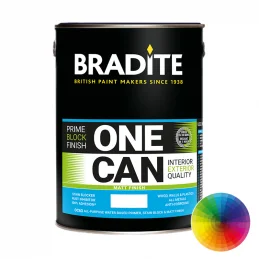
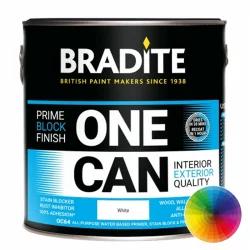
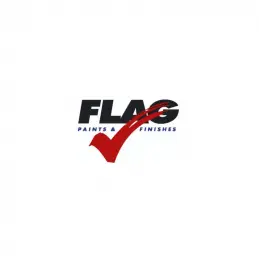
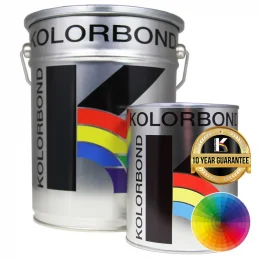
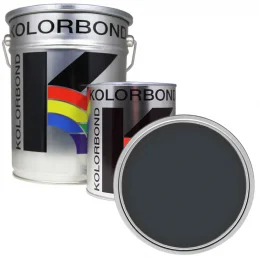
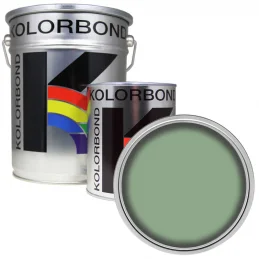
These are the best tips to clean and paint stainless steel products. This guide explains how to clean, prime and paint construction, architectural, industrial, and the commercial and retail sector’s everyday usage of stainless steel on surfaces. Keep Sharing..!!
Hello,
I am trying to paint a stainless steel gutter around the perimeter of an indoor swimming pool at PSU. It will be submerged.
Hi Michael,
I’m afraid we don’t currently stock anything of that nature.
Hi. I have a heavy thick stainless steel sink drainer that does show signs of rust which keeps coming back after I’ve cleaned it… I brought it quite a few years ago and have never seen another like it so I can’t replace it but i want to keep it. Can I respray it with a stainless steel paint? Appreciate any advice.
Hi Marls,
Thank you very much for getting in touch. Unfortunately we wouldn’t be able to assist in this instance as you would require a two pack anti corrosive system for stainless steel for this application, this is due to stainless steel being a particularly difficult surface to coat. Standard paints and coatings, including most industrial metal paints, do not adhere to stainless steel. Shot blasting is considered the preferred method of preparing stainless steel for the proper adhesion of paints and coatings. However, this isn’t always possible to do so, certainly on small-scale projects.
Apologies we couldn’t help this time, and please feel free to get in touch if you have any further questions.
Kind regards
Stuart
I am trying to paint a stainless steel kitchen sink black. are any of your product suitable for such thing? and if so which, and would there be a sealer to protect from deterioration from extensive use?
Thank you
Hi Mel,
I’m afraid we haven’t anything we could recommend for this application.
I am looking for a paint to disguise stainless steel nail or screw heads used for attaching painted wood cladding. Is there anything I can use without abrasions the surface first, as this won’t be possible in situ?
Thanks
Hi Jon,
For this we would recommend priming with Zinsser Cover Stain before 2 coats of Zinsser Allcoat Exterior Water Based in any of the 3 finishes.
I would like to paint a stainless steel weathervane. What paint would you recommend and should I grit blast it before painting? Can you recommend any companies in the Leeds area who would be able to do this?
Hi Michael,
If you are happy having it blasted first then we would recommend Jotun Penguard Primer followed by 2 coats of Jotun Hardtop XP – unfortunately we don’t have a contact locally for anyone who would be able to undertake the works.
If we can be of any further help feel free to get in touch.
I plan to spray flat black my motorcycle exhaust pipe that I’m working on now. I believed the exhaust material is made from 409 grade. I tried to figure it out how to spray the entire exhaust from muffler right up to header/manifold that will last longer. Still skeptical the outcome.
Do appreciate your advise.
Hi Onn,
Thank you for getting in touch. The only real issue you may encounter is that the coating would need to be heat resistant which we offer but unfortunately it doesn’t provide any form of corrosion protection, purely resistance to heat.
409 grade Stainless Steel shouldn’t have any issues with corrosion but any elements that are mild steel would potentially be exposed to rusting without being primed.
We would recommend the Stainless Steel would need abrading to create a key before an application of Rust-Oleum Heat Resistant Paint 750°C which is available in satin black.
I hope this helps. If you have any further questions, particularly regarding any mild steel elements that may be present, please feel free to get in touch with our technical department on 01132 245450 (option 2) or email [email protected] and we will do our best to help.
hi my product is tissue paper stand made up of stainless steel .i need in black colour what type of paint or coating is suitable for this product ..
Good morning,
Thank you very much for your question. For this application we would recommend either Zinsser Bulls Eye 1-2-3 or Zinsser AllCoat Exterior Satin (Water Based).
Only real issue is you will only need a very small amount of product for the job and the smallest pack size of each product we could offer is 1lt.
Many thanks and I hope this helps.
Stuart
Good morning,
I need to build a metal bracket in steel material and after I have to paint it in black color.
can you suggest what’s material is better to use between SPCC or SGCC steel for better paint adhesion ?
and what’s kind of paint do you suggest to use ?
Thanks in advance for your kindly reply.
Best Regards
C. Caruso
Hi Carmine,
Thank you very much for your question. To reduce the number of coats of paint required during application we would recommend SPCC be used, as this can accept a direct to metal application of Rust-Oleum 7500 Alkythane which is an anti-corrosive topcoat.
With SGCC being galvanised it would need to be cleaned, degreased and then primed before the application of a topcoat.
Many thanks and I hope this helps.
Stuart
Good morning, I have some open mesh stainless steel kitchen drawers that are somewhat rusty. I cannot source replacement drawers hence I would like remove rust and respray them in black. What cleaning and painting process and products would you recommend. Thank you
Hi Pauline,
Many thanks for your question. Unfortunately as per the note in the blog post, we wouldn’t be able to offer a solution for this type of domestic kitchen requirement.
Apologies we weren’t able to help this time, and thank you so much for getting in touch.
Kind regards
Stuart
Thanks for so much information. I am a little overwhelmed. I have a very high shine stainless steel medicine cabinet that I would like to redo in a brushed gold to match my new faucets. What would you recommend for this?
For further reference, this is the actual cabinet: https://rh.com/catalog/product/product.jsp?productId=prod1293029&sale=false
Hi Heidi,
Many thanks for getting in touch. For your project the stainless steel would need to be cleaned, degreased and lightly abraded with a non-metallic abrasive prior to applying a single coat of Ardenbrite Quick Drying Basecoat followed by Ardenbrite Metallic Paint which is available in a range of gold finishes.
Thanks again and please feel free to get in touch if you have any further questions.
Stuart
Hi Mel
I wanted to know did you ever find something to paint your stainless steel kitchen sink black?
If anyone knows if this is possible please tell me. I can not find another sink with what I need to replace it
Thanks
Hi JoAnn,
Unfortunately we don’t have a product which would be suitable for this application.
Apologies we weren’t able to help this time, and thank you for getting in touch.
Many thanks
Stuart
I want to paint steel road way plates. I need a paint that will last. I want to know the best method to achieve the results. I have to paint apx. 400 plates 4’ x 8’ and 500 6’ x 10’ thank you. Peter Mirone
Phone cell , 347/996/1411
Hi Peter,
Many thanks for your question and for reading our blog. We would normally recommend Instarmac UltraCrete Instagrip Anti-Skid Patch Repair for this kind of application. However, please note that we only ship within the United Kingdom and unfortunately we aren’t able to ship to other locations.
I hope this helps and please feel free to get in touch if you have any further questions.
Many thanks
Stuart
Hi there, I want to paint the legs of a console table, they are polished stainless steel, I would like to paint them a metallic gold. From some of the above comments it sounds like I would need to clean, degrease, abrase and prime, is this correct? Any particular product for priming and painting that you would suggest? Thank you
Hi Catherine,
Thank you very much for taking the time to read our blog and for your question.
If the table legs are stainless steel and not a chrome plated surface (although the system would probably be the same). We would recommend cleaning and degreasing the surface using Rust-Oleum Pre-Paint Cleaner, no abrasion would be required here. We would then recommend 1 coat of Rust-Oleum 3302 CombiPrimer Adhesion Primer be applied. After approximately 45 mins (see data sheet) we would recommend the application of 2 coats Rust-Oleum CombiColor Original in Gold.
I hope this helps and please feel free to get in touch if you have any further questions.
Many thanks
Stuart
Hi. I would like to paint some interior stainless steel doors in a natatorium. The metal has rusted and is discolored. What would you receommend?
Thanks.
Hi Keith,
Many thanks for taking the time to read our blog and for your question.
Thank you for your patience while we looked in to this for you.
It appears a though the environment is really quite harsh if it is causing marine grade stainless steel to corrode, possibly from the wetting and drying of the chlorine in the water.
Our Technical Manager has conferred with the Technical Manager at Rust-Oleum and who has seconded that once all rust is removed the most pragmatic approach would be 1 coat of Rust-Oleum 3202 Galvinoleum Primer followed by 2 coats of Rust-Oleum 7500 Alkythane.
Please bear in mind that if the stainless steel has been corroded in such a short time (assuming this is a short time) then it is likely that the system specified above will also fail in a faster than usual time.
If abrasive blast cleaning is an option, and only if, we would suggest 2 coats of Rust-Oleum 9100 High Solids Epoxy followed by 1-2 coats of Rust-Oleum 9200 Rust-O-Thane, this would certainly outlast the above system but again would be a shorter than usual life to first maintenance.
I hope this helps and please feel free to get in touch if you have any further questions.
Many thanks
Stuart